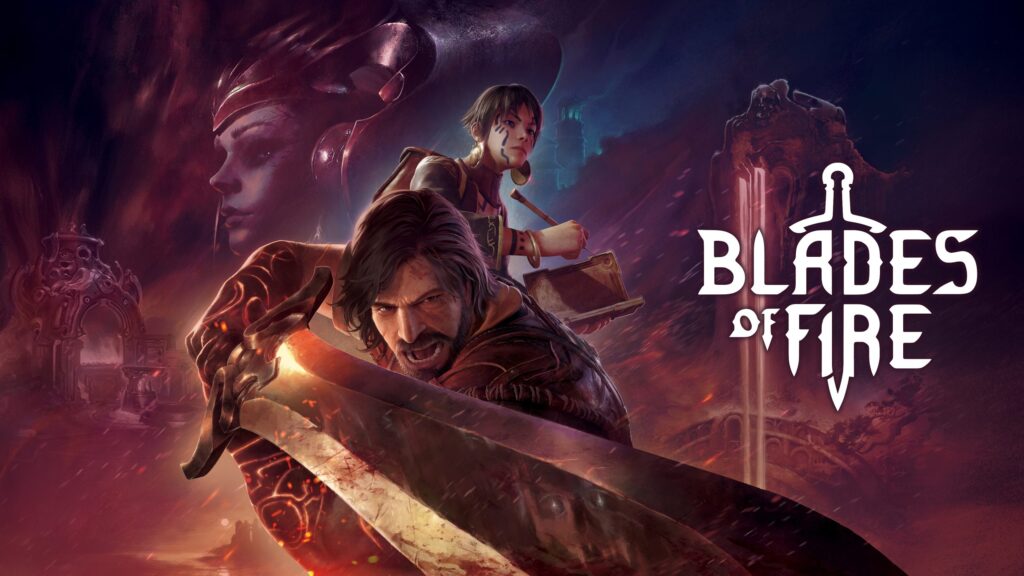-
Story
-
Gameplay
-
Audio
Summary
Pros:
-
Inventive forging mechanic that invites player creativity
-
Stunning visuals capturing a world of grandeur and devastation
-
Strategic and precise combat inspired by MercurySteam’s best work
-
Excellent performance on Xbox Series X
Cons:
-
Some enemy types repeat, reducing combat freshness
-
Early weapon durability system may frustrate
-
Character arcs are intriguing but underdeveloped
-
No multiplayer modes to extend replayability
Reforging a new legacy
MercurySteam, the Madrid-based studio behind Castlevania: Lords of Shadow and the award-winning Metroid Dread, returns to melee-focused action with Blades of Fire. This dark fantasy RPG blends visceral combat with a unique forging system. Players are invited into a realm steeped in myth, ruin, and metal.
With a visually haunting world and deep mechanical ambition, Blades of Fire aims to satisfy fans of challenging, character-driven action games.
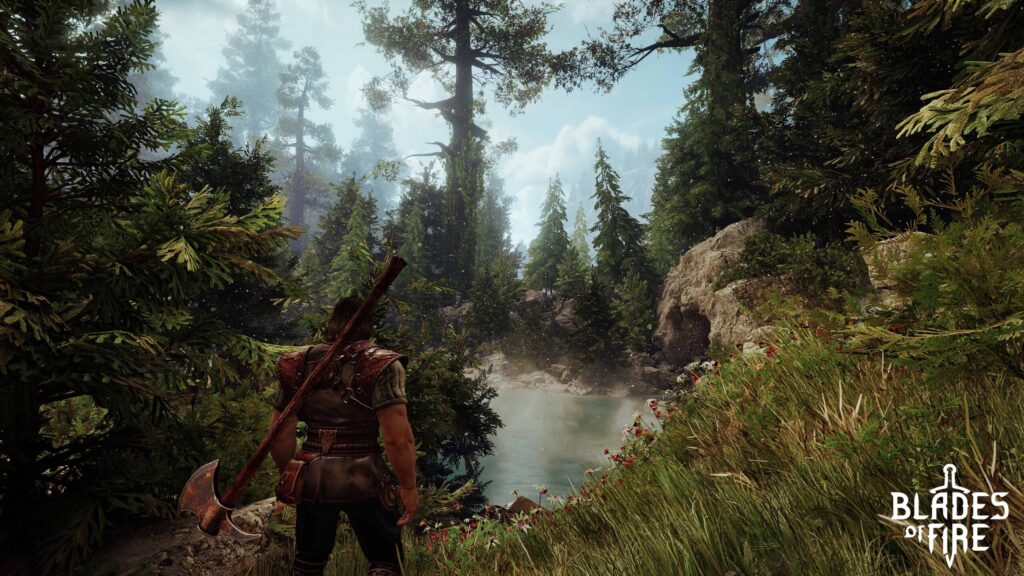
Steel and souls
In a world once ruled by the mythical Forgers – giants who gifted humanity the secret of The Steel – Queen Nerea now twists their legacy, petrifying enemy weapons through ancient magic.
Players step into the role of Aran de Lira, a blacksmith of noble blood, burdened by loss yet driven by duty. Aran’s journey to reclaim the legacy of The Steel is supported by Adso de Zelk, a sharp-witted student from the Abbey of Egion whom you save from a grim fate in the story’s opening moments.
The lore is dense and engaging. Adso contributes beyond exposition, updating a bestiary, decoding ruins, and offering real-time combat analysis. His advice becomes increasingly useful as enemy complexity grows. Despite the rich setting, the emotional core of Aran and Adso’s relationship doesn’t always reach its full potential. Their shared history is hinted at but rarely explored in depth, which makes some key moments feel underdeveloped.
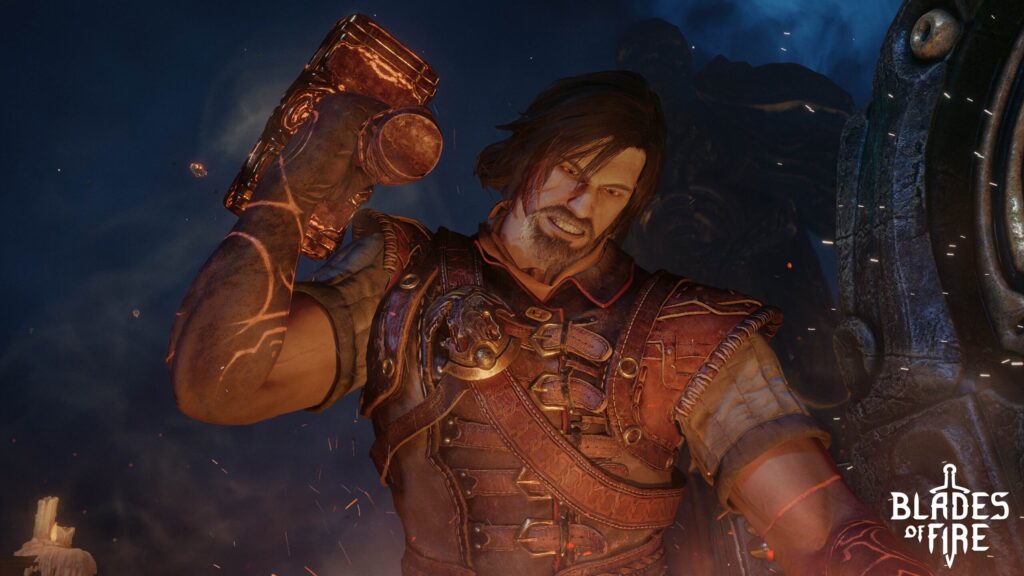
Playing with fire
Forging lies at the heart of Blades of Fire. Instead of finding superior weapons in the wild, players gather materials and blueprints to craft them. Every blade is built from components that define its stats and elemental strengths. Aran’s hammer is more than symbolic – it’s the player’s primary tool. The forging process requires precise timing to strike glowing nodes and manage heat levels.
Each weapon’s Forge Star rating determines how many times it can be repaired. Repairs use crafting materials, not just currency, so long-term planning is essential. This system fosters careful inventory management and rewards thoughtful crafting.
Early on, weapon durability can be punishing. New players may find themselves short on usable blades mid-combat. However, as resources improve and players master the forge, this pressure eases. Losing a weapon when Aran dies adds tension to every fight, as it must be retrieved from the battlefield.
This mechanic enhances the game’s high-stakes approach, treading in the well-worn footsteps of Soulslike gameplay without aping its frustrations.
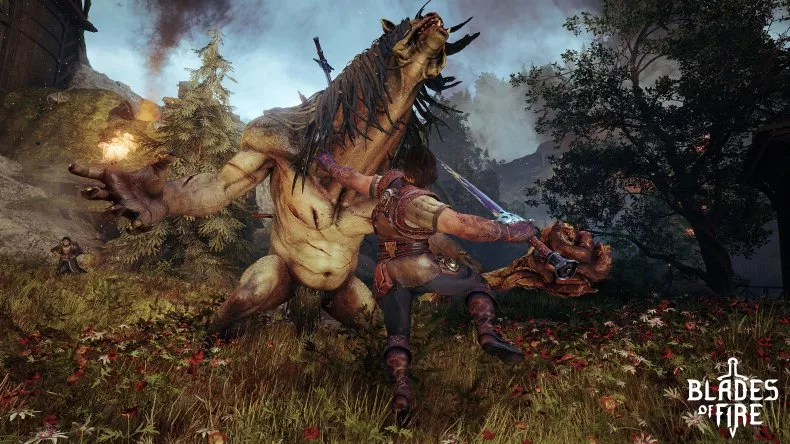
Tactical swordplay
Combat in Blades of Fire is deliberate and tactical. Instead of button-mashing, players must target specific enemy zones: head, torso, left or right side. Each enemy type responds differently to slashing, piercing, or blunt attacks. A clear colour-coded UI guides players: green means effective, yellow is neutral, and red indicates resistance.
The variety in weapon types and enemy behaviours encourages experimentation. Boss fights often demand a mix of movement, pattern recognition, and smart weapon pairing. The thrill of landing a well-timed strike with a nearly broken sword – or clutching victory before your weapon shatters – makes combat feel consistently tense and rewarding.
However, mid-game repetition does surface. While new enemy designs appear, others are reused with minor variations. The game’s interconnected world leans into a Metroidvania structure, but the map system lacks clarity. Navigation can be frustrating, with unclear pathways leading to unnecessary backtracking.
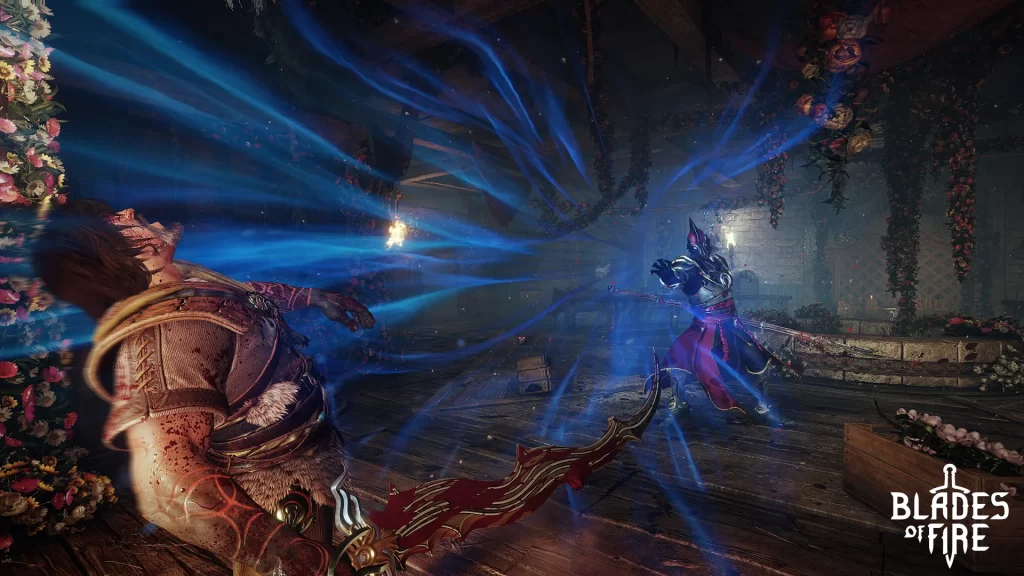
Sound and fury
Stalwart soundsmith Óscar Araujo’s score is a standout. Orchestral swells elevate climactic battles, while choral layers and ambient textures create a sense of unease in quieter zones. The music serves the dual role of enhancing emotion and maintaining tension.
Sound design complements the visuals. Clangs, strikes, and elemental effects resonate with weight. Whether in the forge or on the field, every impact is felt. Voice acting is generally solid, particularly Adso, whose dry wit adds levity. However, repeated dialogue lines can undercut immersion during longer sessions.
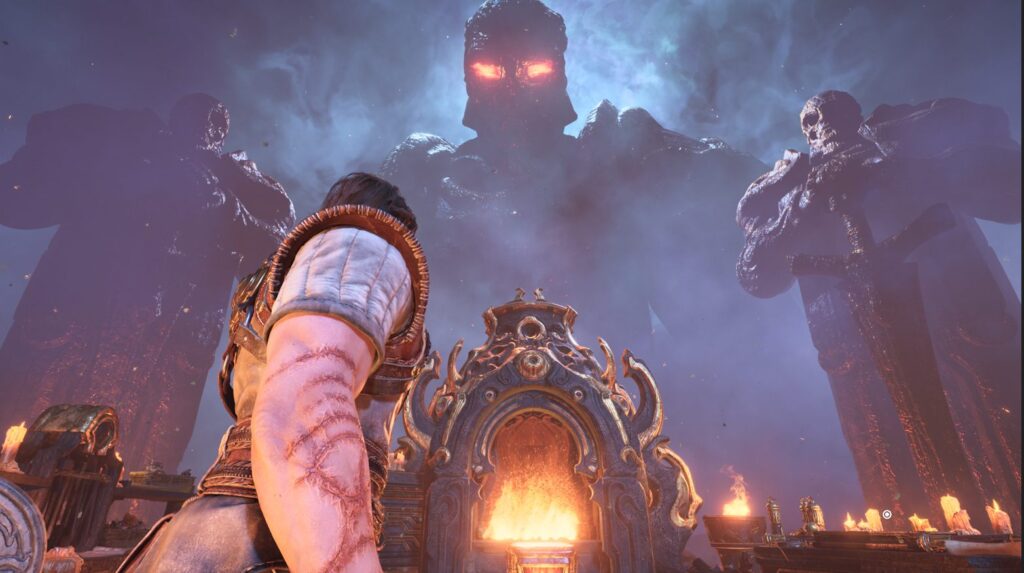
Ash and ember
Visually, Blades of Fire is arresting. MercurySteam crafts a gothic world of ruined splendour and forgotten power. From glowing forges to crumbling towers, the game presents a consistent and evocative art style.
The level design features verticality and layered environments, though traversal occasionally feels clunky. Enemy design is similarly detailed, with grotesque bosses that feel intimidating before they even move.
Performance on Xbox Series X is strong. The game holds a steady 60fps with minimal dips. Load times are brief, fast travel is responsive, and dynamic resolution scaling (from 1080p to 2160p) ensures visual fidelity remains high throughout.
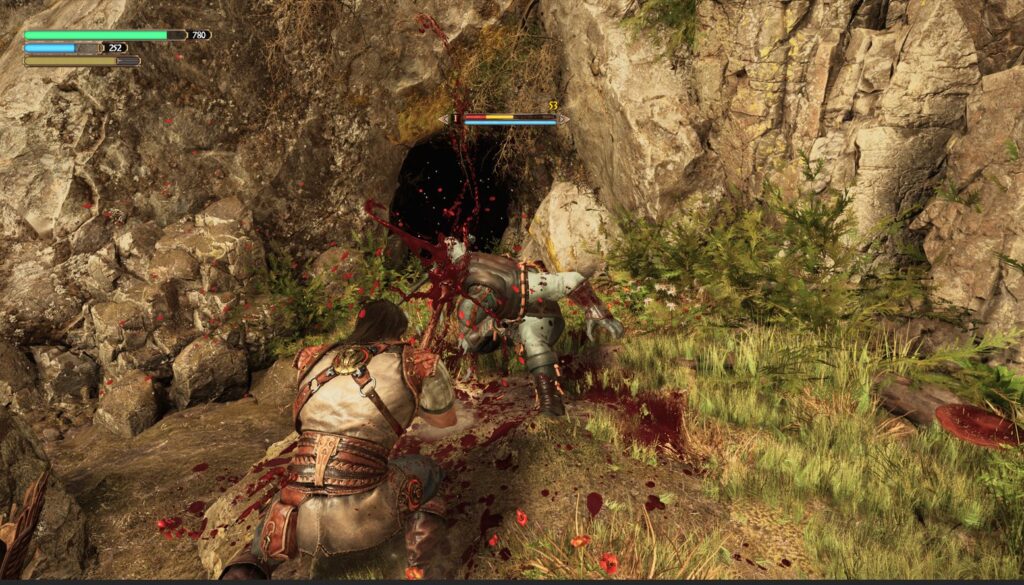
Accessibility gaps
The game offers three difficulty settings: Easy, Normal, and Hard. However, choosing Easy disables achievements – a questionable trade-off. Subtitles are adjustable in size and colour. Players can toggle camera shake and motion blur.
Unfortunately, Blades of Fire lacks features like colourblind modes, full control remapping, and audio description. In 2025, such omissions stand out. The current options are a solid start but fall short of comprehensive accessibility.
Final verdict
Blades of Fire is an atmospheric, rewarding, and at times brutal experience. With its deep forging system, satisfying combat, and stunning visual design, it’s a testament to MercurySteam’s strengths. While its storytelling and accessibility options could improve, the game’s core systems are finely honed.
For action RPG fans seeking challenge, craft, and a world steeped in shadow and flame, Blades of Fire delivers a distinctive and rewarding adventure, forged with style and purpose. Rough edges remain, but the weapon holds true.
